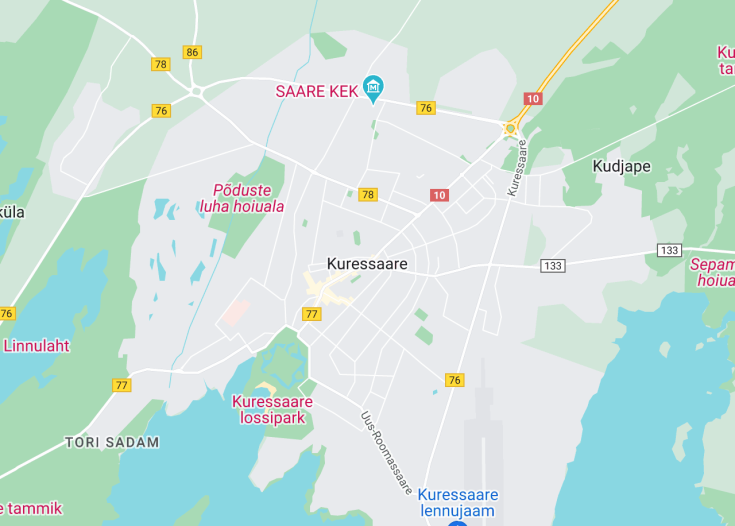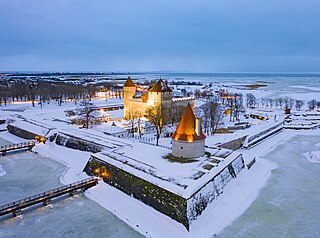Kuressaare, the charming capital of Saaremaa, Estonia’s largest island, presents a cozy getaway steeped in rich history and natural beauty. Known for its well-preserved medieval Kuressaare Castle, this picturesque town offers visitors a perfect blend of cultural heritage and serene landscapes. With its tranquil streets, quaint shops, and inviting cafes, Kuressaare promises a relaxing atmosphere perfect for those looking to escape the hustle and bustle of city life. The surrounding landscapes offer lush forests and stunning coastlines, ideal for nature lovers and outdoor enthusiasts.
Consider visiting in the summer when the town’s festivals bring medieval history to life, offering unique experiences that are both educational and entertaining.
To fully embrace local culture, try the traditional Saaremaa dishes like black bread and homebrewed beer available at many local restaurants.
Top things to do & see in Kuressaare
Select the following sights and activities to discover best tickets and tours available in Kuressaare.
Kuressaare: The Heart of Saaremaa
| Country | Estonia |
| Time in Kuressaare | GMT+3 |
| Language spoken | Estonian |
| Population | 13,166 (Statistics Estonia, 2023) |
| Currency | Euro (€, EUR) |
| Airports | Kuressaare Airport (2 mi / 3.22 km). |
Kuressaare, the largest town on Saaremaa island in Estonia, offers a charming blend of old-world architecture and modern amenities. Known for its historic castle, which has stood since the 14th century, Kuressaare exemplifies a well-preserved medieval town. Visitors are drawn to its scenic beaches, luxurious spas, and vibrant cultural scene. The town’s history is rich with tales of conquest and rebirth, serving as a strategic location through various periods, from the Teutonic Order to modern Estonia.
Where is Kuressaare?
Kuressaare, located on the southern coast of Saaremaa island, faces the Baltic Sea in western Estonia.
Distances:
| Route | Distance by car | Time by car |
|---|---|---|
| Tallinn to Kuressaare | 134 miles (215 km) | 3 hours 30 minutes |
| Tartu to Kuressaare | 172 miles (277 km) | 4 hours 15 minutes |
What is Kuressaare famous for?
Kuressaare is most famous for its well-preserved Kuressaare Castle, a stronghold that dates back to the medieval times and stands as a monument of history and architecture in Estonia.
History
Early Settlements and Medieval Origins (8th – 13th Century)
Strategically located on Saaremaa Island, Kuressaare has been inhabited since ancient times, given its desirable position on the Baltic Sea. Archaeological findings trace the early settlements in the region back to the 8th century. Initially, these were sparse and mainly consisted of fishing communities. By the 13th century, as part of the Northern Crusades, German crusaders established control, and the town began to take form with the construction of the stone fortress around 1381, which now serves as Kuressaare’s iconic landmark.
The Hanseatic Era and Swedish Rule (14th Century – 1710)
During the Hanseatic League’s era, Kuressaare emerged as a modest trading post. It benefitted from its inclusion in this powerful economic and defense alliance which dominated Northern Europe’s maritime trade. Following the decline of the Hanseatic League, Saaremaa and Kuressaare came under Swedish control. This period was marked by economic development and the fortification of the city, enhancing its architecture and infrastructure significantly.
Under Russian Rule (1710 – 1918)
After the Great Northern War, Kuressaare, along with the rest of Estonia, came under Russian rule. The town saw considerable growth and development during this period, notably with the establishment of spa culture in the 19th century. Aristocrats from across the Russian Empire would flock to Kuressaare for its purported healing mud baths and tranquil seaside.
The 20th Century: Wars and Independence (1918 – 1991)
The early 20th century was tumultuous for Kuressaare, mirroring the greater struggles in Europe. After brief independence post-World War I, Estonia was then occupied by both Nazi Germany and the Soviet Union during World War II. Kuressaare experienced significant hardships during these occupations. Post-war, it became part of the Soviet Union until Estonia regained independence in 1991 following the dissolution of the USSR.
Modern Day Kuressaare (1991 – Present)
Since regaining independence, Kuressaare has transformed into a vibrant cultural hub. Its rich history combined with a renewed focus on sustainable tourism and preservation of its natural and architectural heritage has made it a unique destination. The town’s economy today thrives on tourism, with significant investment in enhancing infrastructural and recreational facilities.
Visit Kuressaare
What to see and do in Kuressaare
Exploring Kuressaare offers a blend of historical and natural attractions. Key sights include:
- The Kuressaare Castle, a well-preserved medieval fortress with a history museum.
- Spa resorts that offer treatments using the local therapeutic mud and seawater.
- City Center’s charming streets lined with cafes and traditional shops.
- Local beaches, ideal for leisurely walks and relaxing by the seaside.
Annual Events in Kuressaare
Kuressaare hosts several cultural and music festivals throughout the year, particularly vibrant during the summer months. Notable events include the Saaremaa Opera Days and Kuressaare Maritime Festival, both drawing visitors from across Europe.
Best time to visit Kuressaare
The optimal time to visit Kuressaare is during the late spring to early autumn months, from May through September. This period offers the best weather, enabling visitors to fully enjoy outdoor activities and local festivals.
Is Kuressaare worth visiting?
Kuressaare is undoubtedly worth visiting for its fascinating blend of history, culture, and natural beauty. The picturesque landscapes, historical edifices like the grand Kuressaare Castle, and the array of wellness spas provide a perfect retreat for those looking to either explore rich historical sites or unwind in serene settings. Furthermore, its vibrant cultural scene and warm local hospitality make every visit memorable.

















